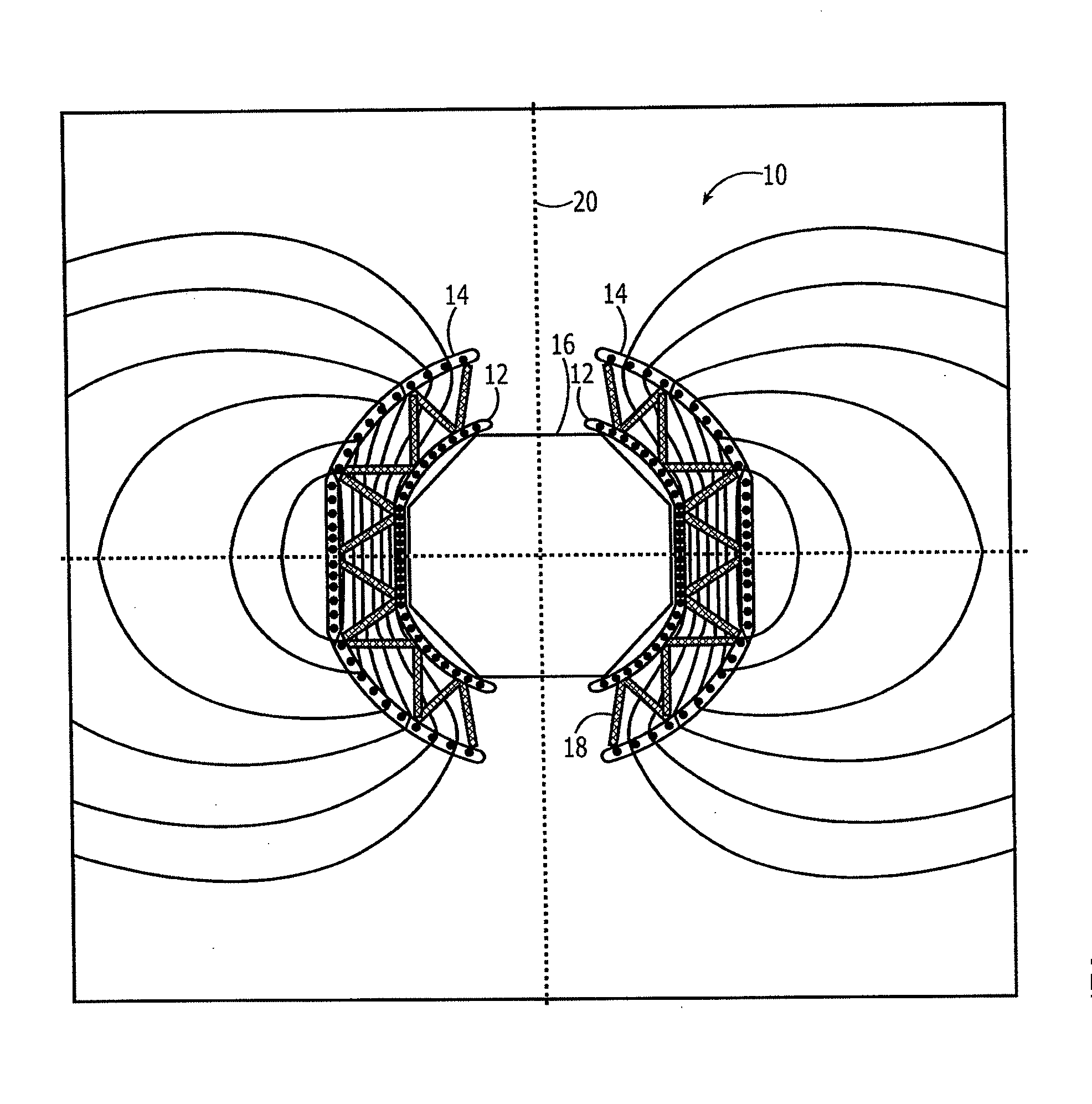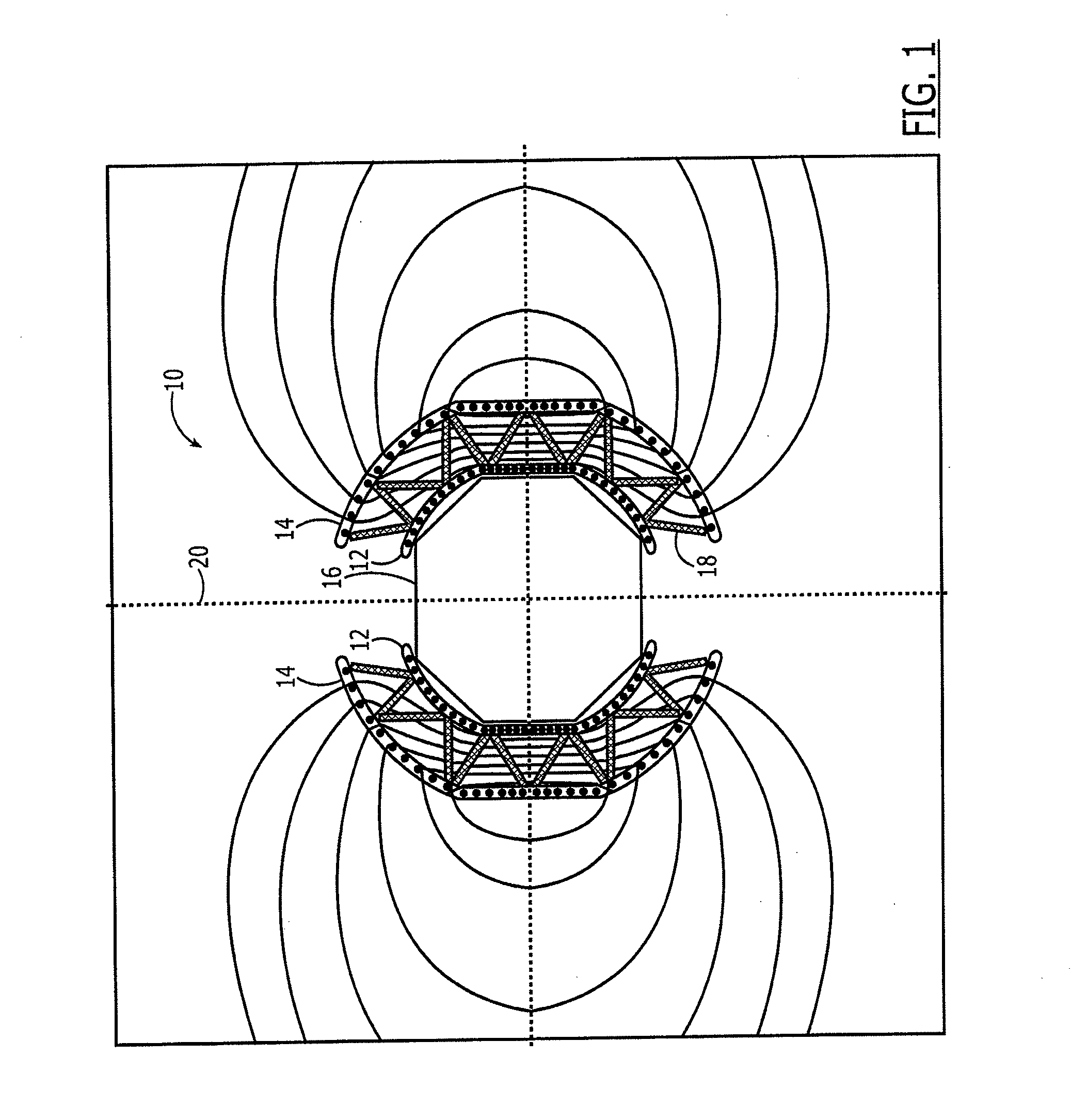Cryogenically cooled radiation shield device and associated method
a radiation shield and cryogen cooling technology, applied in the field of methods and devices, can solve the problems of human cells being damaged by radiation exposure, sensitive electronic components and other devices being adversely affected, and the use of radiation absorption materials being unpractical for space exploration and other applications, and achieve the effect of less cryogen liquid consumption
- Summary
- Abstract
- Description
- Claims
- Application Information
AI Technical Summary
Benefits of technology
Problems solved by technology
Method used
Image
Examples
Embodiment Construction
[0025]Embodiments of the present disclosure now will be described more fully hereinafter with reference to the accompanying drawings, in which some, but not all embodiments are shown. Indeed, these embodiments may be embodied in many different forms and should not be construed as limited to the embodiments set forth herein; rather, these embodiments are provided so that this disclosure will satisfy applicable legal requirements. Like numbers refer to like elements throughout.
[0026]Referring now to FIG. 1, the radiation shield device 10 in accordance with one embodiment of the present disclosure is illustrated. The radiation shield device 10 is generally described herein as providing protection from radiation for a manned space vehicle or a habitat for celestial bodies, particularly during CME events. However, further embodiments of the present disclosure may include radiation shield devices for any situation in which protection from particle radiation is desired beyond the earth's m...
PUM
 Login to View More
Login to View More Abstract
Description
Claims
Application Information
 Login to View More
Login to View More - R&D
- Intellectual Property
- Life Sciences
- Materials
- Tech Scout
- Unparalleled Data Quality
- Higher Quality Content
- 60% Fewer Hallucinations
Browse by: Latest US Patents, China's latest patents, Technical Efficacy Thesaurus, Application Domain, Technology Topic, Popular Technical Reports.
© 2025 PatSnap. All rights reserved.Legal|Privacy policy|Modern Slavery Act Transparency Statement|Sitemap|About US| Contact US: help@patsnap.com



